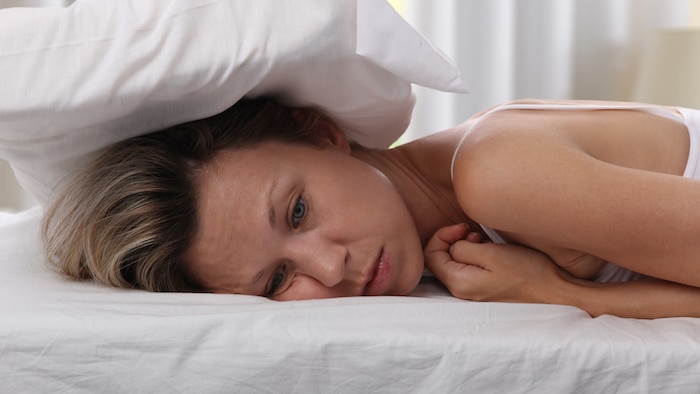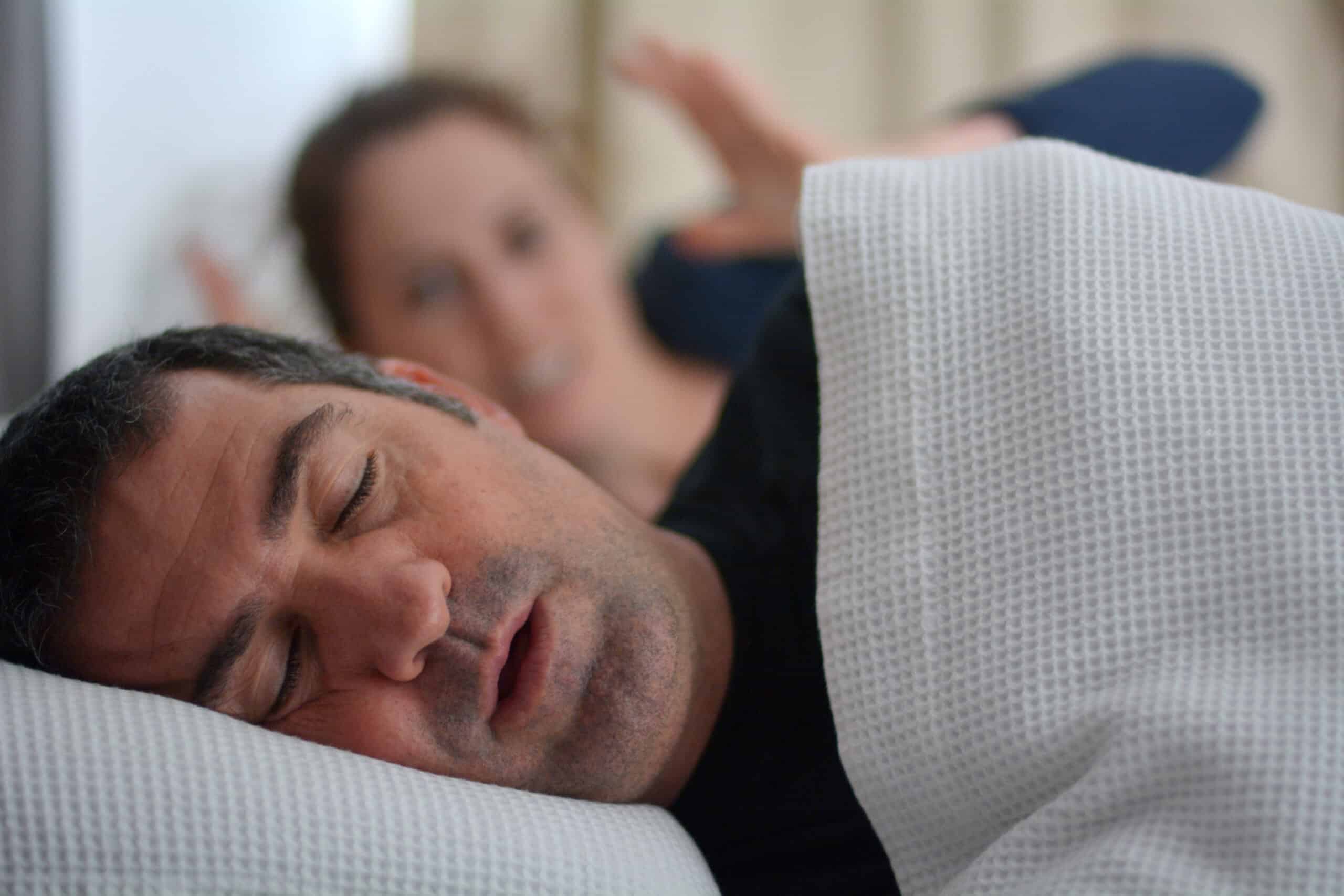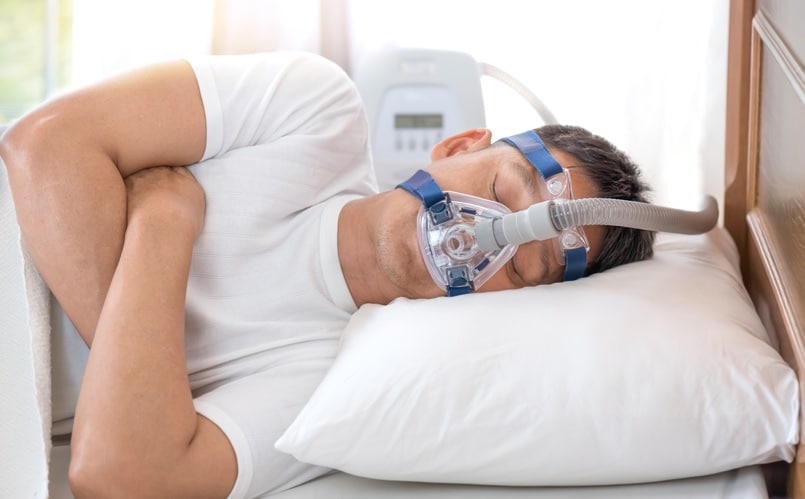Sleep Apnea Treatment in Pasadena, TX

The Dangers of sleep apnea
American society takes a somewhat perverse pride in working more and sleeping less. While this may seem like the ultimate productivity, it’s actually bad for us mentally and physically.
It’s one thing to not get enough sleep as a choice, but it’s another to suffer from sleep apnea. Most people don’t even know they have sleep apnea, but it’s ruining their sleep, and can actually be killing them.
Dr. Covell has extensive experience recognizing sleep apnea at his Pasadena, Texas practice.
See What Our Patients Are Saying:
“I’ve been a patient for years and have been nothing but happy. I don’t have to tell you how amazing he is. Once you go for an appointment you will see how great the whole staff is.” -Courtney G.
Click here to read more reviews.
What is sleep apnea?
Many people think that snoring is sleep apnea. While most people with sleep apnea have some degree of snoring, snoring only involves interference of the airway when sleeping. Sleep apnea involves partial or complete blockage of the airway dozens of times through the course of the night. This forces the person to wake up to regain muscle control in the throat to reopen the airway. Typically, the person doesn’t become fully conscious after these episodes, but this constant cycle of lack of oxygen and forced awakening results in poor sleep quality. This leads to fatigue, sleepiness, inability to concentrate, depression, and even greater health risks.
How common is sleep apnea?
Sleep apnea is the most underdiagnosed medical condition in the U.S. It affects 4 percent of middle-aged men and 2 percent of middle-aged women, yet only a fraction of those people receive sleep apnea treatment.
What is obstructive sleep apnea?
Obstructive sleep apnea (OSA) is the most common form of sleep apnea. OSA occurs when a person’s airway becomes partially or completely blocked while sleeping. In a frantic attempt to get the required oxygen, the brain wakes the person so that he or she engages the throat muscles to open the blocked airway. This can happen dozens, even hundreds, of times every night.
What causes sleep apnea?
Obstructive sleep apnea occurs when the muscles in the back of the throat relax. These muscles support all of the surrounding tissues, such as the tonsils and the side walls of the throat, so when they relax the airway narrows or closes. In some cases, the tongue falls back, blocking the upper airway. In others, the airway collapses on itself. When we’re awake, our brains make sure the tongue and muscles surrounding the airway are more rigid to enable airflow. Plus, we’re not lying down. But when we’re sleeping and the brain isn’t alert, the airway can collapse.
Other contributing factors with sleep apnea are large tonsils and adenoids, a neck circumference over 17 inches, obesity, a small lower jaw with a deep overbite, and a family history of sleep apnea.
What are common sleep apnea symptoms?
These are the common symptoms of sleep apnea:
- Loud snoring
- Abrupt awakenings from sleep
- Awakening with shortness of breath (central sleep apnea)
- Episodes of breathing cessation witnessed by another person
- Waking up with a headache in the morning
- Excessive daytime sleepiness
- Waking up with a dry mouth or sore throat
- Difficulty staying asleep
- Attention problems
- Irritability
How is sleep apnea different from snoring?
Snoring occurs when there is resistance to airflow when a person is sleeping, particularly when lying on his or her back. The noise results from the tissues in the back of the throat vibrating against one another when the person inhales.
When a person has sleep apnea, the airflow is partially or completely blocked and the person stops breathing for a period of a few seconds or even minutes. While snorers can have sleep apnea, it is not a direct causal link.
How is sleep apnea diagnosed?
If you have some of those symptoms listed above, Dr. Covell can provide a self-assessment called the Eppworth Sleepiness Scale questionnaire. He also can provide what is called a “bed partner survey.” Answers provided could make it clear the person should be screened for obstructive sleep apnea. Waking up gasping and chronic snoring can be signs of sleep apnea, but they can sometimes simply be due to factors such as congestion or alcohol consumption.
What negative health impacts can sleep apnea cause?
Obstructive sleep apnea is a serious health concern. It’s way more than just some annoying snoring! People with OSA have a higher risk of stroke, heart disease (including hypertension), heart failure, and heart attack. OSA patients incidence of type 2 diabetes is higher. And, if all of that weren’t enough, OSA is linked to premature death.
At home sleep tests for sleep apnea diagnosis
If your bed partner survey and Eppworth questionnaire point to possible OSA, the next step is usually at-home sleep study. For this, we use the small, convenient MediByte Junior system that is very comfortable, yet very precise. It provides detailed reporting of respiratory and cardiac data, snoring, and numerous other important measurements taken while you sleep. It’s like a sleep lab in your home.
Sleep Study Results
If the results from your at-home sleep study show the probability of sleep apnea, Dr. Covell will likely refer you to a sleep physician for a polysomnogram, a sleep study performed in a sleep lab.
Schedule Your Appointment Today
What is the best treatment for sleep apnea?
The severity of a patient’s sleep apnea will dictate the course of treatment. Dr. Covell and his team treat cases of mild to moderate sleep apnea with oral appliances. These oral appliances are worn at night while sleeping. They advance the lower jaw to help keep the patient’s airway open during sleep.
Dr. Covell uses the MicrO2 Sleep and Snore Device. This device is milled by the ProSomnus company, based off scans performed on the full arch of teeth. CAD/CAM software then designs the sleep appliance for a precise fit, making it easy to wear and use every night.
Treating Severe Sleep Apnea
For patients with severe sleep apnea, the American Association of Sleep Medicine (AASM) recommends the use of a CPAP (Continuous Positive Airway Pressure) machine. This is a breathing system that uses air pressure to keep the upper airway passages open. The patient wears a mask over his or her nose during sleep. The mask delivers air pressure that is somewhat greater than the air pressure in the bedroom. The pressure difference keeps the airway passages open preventing snoring and sleep apnea.
With both oral appliances and CPAP treatment, there is an adjustment period. Dr. Covell and our entire team will help to make sure whatever system you’re using is as comfortable and manageable as possible.
Is a CPAP system hard to sleep with?
There are a variety of different mask styles with today’s CPAP systems. Some only fit on the nose. Your CPAP provider and Dr. Covell’s team will help you make the adjustments you need to make this potentially life-saving system work for you.



